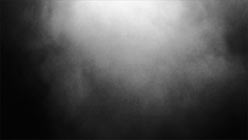Matt Kennedy is no stranger to altering images of the natural world. Last year, the San Francisco-based photographer made a zine titled Predicting Earthquakes: a scientific manual for the forecasting of seismic activity, which featured photocopies of haunting and bizarre landscape imagery. In his new show at Sight School, A Measurement of the Distance, Kennedy takes that process a step further, making still images from his own high-definition video captures of natural scenes. Unlike the photocopy, a medium that tends toward blown-out whites and deep matte darks, the interest of the new work is the quality of the pixels themselves. A pixel, conventionally, is most effective when it is invisible. However, in the process of cropping and re-sizing select still frames, Kennedy’s focus deteriorates, and the quality of the pixels themselves sharpen. Like cells under a microscope, they take on a life of their own. This complementary or dual way to view the digital image is illuminated by Kennedy’s titles: The Appearance Of An Object Rising From The Ocean (video still) , and my personal favorite, The Instant that Everything in This Photograph Vanished (video still).

“It’s Come Down To This (kicking video),” Matt Kennedy.
In the midst of the minimal black-and-white show, the only color is in a video shot by Kennedy, displayed face up in the center of the gallery, within a large black structural encasement. In It’s Come Down To This (kicking video), Kennedy filmed his own feet kicking dehydrated algae off of rocks near the ocean. There is nothing tender about the video; his blows are hasty, hard, and reckless, resembling an aimless child creating a path to nowhere. The video is loud, and appears to grow increasingly louder over the course of its eight-minute loop. While you can’t see the video when looking at the photographs, its soundtrack colors the meaning of nearby work.

“An Interpretative Sign for the Grand Canyon,” Matt Kennedy.
A Measurement of the Distance is not a celebration of the mystical beauty of nature, but ultimately a pathetic frustration with it. In addition to obfuscating the possibility of “seeing nature clearly” by assigning more value to pixilated video stills than to the landscape they represent, Kennedy wields a dark humor, and with intelligent results. This effect is evidenced in the only other sculptural piece in the show, An Interpretative Sign for the Grand Canyon. Mounted on aluminum on a stand at chest height and facing squarely into the corner of the gallery, it displays a photograph that Kennedy took of the Grand Canyon. Mimicking an instructional placard in front of a natural landmark, Kennedy has coyly presented the landscape itself as the sign. Rather than our metaphysical relationship to nature, it is our approach to viewing and packaging it that Kennedy calls into question.


